Connor's Guide to Dragons
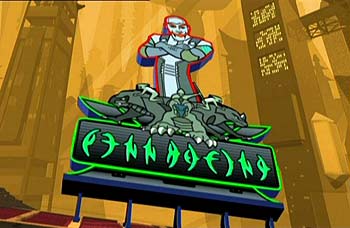 Welcome to Penn Racing Stables! Want to learn about dragons? Then you've come to the right place. Connor Penn is a skilled racer and dragon breeder. He was able to breed gold dragons back into existence, so he knows pretty much all there is to know about dragons. Have a look around and learn what Connor has to tell you about the dragons that inhabit the Dragon Booster world.
Welcome to Penn Racing Stables! Want to learn about dragons? Then you've come to the right place. Connor Penn is a skilled racer and dragon breeder. He was able to breed gold dragons back into existence, so he knows pretty much all there is to know about dragons. Have a look around and learn what Connor has to tell you about the dragons that inhabit the Dragon Booster world.
What is a Dragon?
A dragon is a large reptile of great strength and speed. They tend to resemble the dinosaurs more so than the look of dragons from our Eastern and Western culture. For example, except for Beau (and possibly other gold dragons if they were to exist), dragons don't have wings and can't fly. They also can't breath fire, though their ability to use mag energy more than makes up for this.
Dragons have the ability to run at great speeds for extended periods. The fastest dragons are able to reach 200 MPH (over 300 KPH). This makes them ideal for racing.
Dragons are highly intelligent. Even though they don't speak, they are said to be as intelligent as humans. And the fact that Propheci can speak coherently through his rider and exhibits human-level reasoning and planning abilities all backs this up. It is unclear how much dragons communicate among themselves and whether or not they might have their own language.
Average adult dragons are stated as weighing around 10 tons (roughly 9,000 kg) and are perhaps 20-25 feet in length. However, giant sized dragons also exist. Abandonn, Tyrannis Pax, Libris and at least two giant orange dragons in the Prophets crew have been seen. In the case of Libris, it may be that all gray dragons are giants, but this has never been stated in the show. What causes the other dragons to become giants, or whether they might be a subspecies, is unknown.
 Dragons hatch from relatively small eggs that are about the size of a large ostrich egg. Dragons probably grow quickly and Beau appears to be full grown at age 16. A dragon's life span is unknown, however Rivett stated that Libris was involved in the first dragon-human war 3000 years ago. It seems unlikely that the average dragon would live this long, otherwise the planet would be overrun with ancient dragons. So it's probably only the elusive gray dragons that live this long. It may be speculated that the average dragon has a life span similar to a human.
Dragons hatch from relatively small eggs that are about the size of a large ostrich egg. Dragons probably grow quickly and Beau appears to be full grown at age 16. A dragon's life span is unknown, however Rivett stated that Libris was involved in the first dragon-human war 3000 years ago. It seems unlikely that the average dragon would live this long, otherwise the planet would be overrun with ancient dragons. So it's probably only the elusive gray dragons that live this long. It may be speculated that the average dragon has a life span similar to a human.
Dragons can be either bipedal (like a T-Rex) or can be quadrupeds. It appears that their draconium color determines this to a large degree. Red, orange, purple and light green dragons are all bipeds, while gold, black, green, blue, brown, light blue, white, turquoise and gray are all quadrupeds. Furthermore, the two heavy dragon classes (green and brown) have hooves while the rest of the dragons have clawed feet. How absolute these characteristics are for a particular color of draconium is unknown. For example, Mortis' dragon Tyrannis Pax appears to be an anomaly He's a giant bipedal dragon but his mag energy appears to be gold like Beau's. His draconium color has never been stated, so exactly what kind of dragon he might be is up for debate.
Dragons are distinguished from other animals in the Dragon Booster world by their draconium and mag abilities. All other animals and the humans themselves lack these characteristics.
Draconium
A dragon's strength and power comes from the draconium concentrated in its bones. It is never clearly stated in the show, but draconium appears to be a metal element. This element generates vast amounts of energy when in the presence of a life force from which the dragon derives its great strength and speed as well as its mag abilities.
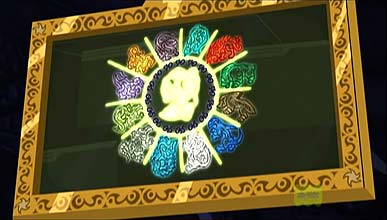 There are a total of thirteen colors of draconium:
There are a total of thirteen colors of draconium:
- Gold
- Black
- Red
- Green
- Blue
- Purple
- Brown
- Orange
- Light Green
- Light Blue
- White
- Gray
- Turquoise
The first five are considered to be the main colors of draconium as stated in "Return of Drakkus, Part 1."
It is unclear how the draconium ends up in dragon's bones. It may be the case that their bodies manufacture it the way a plant manufactures chlorophyll, or it may be that they ingest draconium with their food the way we ingest the calcium that ends up in our bones.
Deposits of raw draconium exist in the ground and can be mined. This appears to be where the draconium metal used to manufacture the gear comes from. How the raw draconium ended up in the ground is unknown. It may have been there since the planet formed, like the iron in our planet, or it may have been formed by a geological process, like how diamonds are formed. Gray draconium appears to the be one of the rarest (probably along with gold) as stated in "Misjudged."
Mag Energy
What sets dragons apart from all other animals is their ability to generate and use mag energy. This energy, generated by the draconium in a dragon's bones, allows them to magnetically attract and repel other objects at will. It is quite powerful and can also be directed into a concentrated beam and used for attack and defense. The energy can also be used to power the gear that a dragon has magged. In addition, a properly trained and skilled human can channel a dragon's mag energy and use it themselves. Mag energy is visibly tinted to match the dragon's draconium color.
A dragon's mag energy is not limitless. The more energy a dragon uses, the faster its reserves are drained. Once drained, a dragon becomes physically exhausted and must rest in order to recharge and recover.
Magging Gear
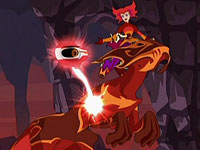 A dragon uses gear by magging the gear to its body. When a dragon mags gear, it creates a stable magnetic lock with the gear which fastens the gear solidly in place. This is similar to how the north and south poles of two magnets lock together when they come in contact. Mag-locks are exceptionally strong and the gear will stay put until the dragon wishes to release it or until the dragon's draconium energy is nearly drained.
A dragon uses gear by magging the gear to its body. When a dragon mags gear, it creates a stable magnetic lock with the gear which fastens the gear solidly in place. This is similar to how the north and south poles of two magnets lock together when they come in contact. Mag-locks are exceptionally strong and the gear will stay put until the dragon wishes to release it or until the dragon's draconium energy is nearly drained.
Gear is usually magged to key points on a dragon's body called zap caps. These include the forehead, chest, shoulder region and other main joints, and are small bone protrusions where draconium energy emissions from the dragon are focused and can project more easily from its body. These zap caps emit visible magnetism in the form of electrical bolts of energy colored to the specific bone color of that dragon type.
Draconium gear floats when magged just off the surface of the dragon and this distance can be adjusted by either dragon or rider. Dragons can rotate gear over a zap cap, swap gear between zap caps to move gear around the body, mag gear from gear pit racks and repel other dragons or their own gear from multiple zap caps.
Gear always has two functions: the race or competition function and the subsequent battle usage of same.
Gear contains draconium of a specific color, and to mag the gear, the dragon must find a way to balance its own draconium energy with the gear. Not all draconium colors are compatible with each other, and it will be harder for a dragon to mag certain colors of gear if the dragon's own primary or secondary draconium colors are not compatible. Only gold dragons, like Beau, and gray dragons can mag all gear colors.
Learn more about gear in the Gear Guide in Kitt's Guide to Dragon City.
Mag Abilities
There are variety of named mag techniques and abilities which are listed here for reference.
Mag or magging
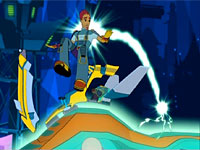 This is probably the most basic mag ability done by dragons. The ability it gives the dragon is very similar to the Force in Star Wars and allows the dragon to levitate and move objects. To do this, the dragon concentrates its draconium energy at one of the main focal points on its body. This is usually the forehead, but other key points are along the spine and other major joints. Once the energy is concentrated and focused, the dragon can direct a stream of draconium energy of the chosen strength and use it to lift and move objects around it. The dragon can also lift humans and even other dragons if it is strong enough.
This is probably the most basic mag ability done by dragons. The ability it gives the dragon is very similar to the Force in Star Wars and allows the dragon to levitate and move objects. To do this, the dragon concentrates its draconium energy at one of the main focal points on its body. This is usually the forehead, but other key points are along the spine and other major joints. Once the energy is concentrated and focused, the dragon can direct a stream of draconium energy of the chosen strength and use it to lift and move objects around it. The dragon can also lift humans and even other dragons if it is strong enough.
In episode 1, it was stated that Beau could repel Moordryd with his mag-burst because of the draconium in his suit, so this tends to indicate that dragons can only mag objects that have draconium in them. However, we've also seen other instances where dragons have magged objects that would not seem to have draconium in them, so perhaps this rule isn't strict. The mag energy used for this ability is harmless and a dragon can use it to gently lift their rider and place them in the saddle, for example. A dragon can also use it to hurl an object at great speed for fighting if need be.
Bear in mind that mag-streams can be cut off by various types of obstacles and projectiles. Mag-streams cannot penetrate solid walls but they can be aimed and moved precisely by the dragon. Mag-streams generally go in a straight line, though we've also seen Beau send a mag-stream around a corner in "The Lost Track of Doom."
Mag-jump
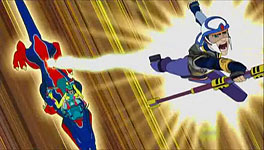 A mag-jump is generally a maneuver done by a human rider with help from the dragon. The dragon directs a mag-stream from its shoulder region to lift its rider out of the saddle and into the air. This allows the rider to perform aerial acrobatic maneuvers. Among other things, this is frequently used to battle with other riders during races. It's also possible for a dragon to mag-jump by itself by directing its mag-energy at the ground. This pushes the dragon into the air with the height of the jump determined by the dragon's mag-energy strength.
A mag-jump is generally a maneuver done by a human rider with help from the dragon. The dragon directs a mag-stream from its shoulder region to lift its rider out of the saddle and into the air. This allows the rider to perform aerial acrobatic maneuvers. Among other things, this is frequently used to battle with other riders during races. It's also possible for a dragon to mag-jump by itself by directing its mag-energy at the ground. This pushes the dragon into the air with the height of the jump determined by the dragon's mag-energy strength.
Mag-lock
A mag-lock is what holds gear in place on a dragon's body. See Magging Gear above.
Mag-burst or Mag-blast
A general term for a concentrated release of mag-energy from a dragon, usually done for attack or defense. The mag-stream is fired with so much strength that it can repel and/or damage the object it hits. For example, if a mag-burst is mag-fired at a rock pillar, the rock pillar will take damage and crumble.
Mag-push
A mag ability done by a dragon's human rider. The dragon channels its mag-energy through its human rider, allowing the rider to send out a stream of mag energy to repel an object. This mag-ability is very difficult to learn and is generally only executed by Elite Class racers and Dragon Priests. It has been noted that the more pure a dragon's draconium energy, the easier it is for the rider to channel that energy ("Return of Drakkus, Part 2"). It is also implied that there is some amount of danger involved in channeling a dragon's energy and that inexperienced riders should not attempt it. Note that a human does not necessarily have to be in physical contact with a dragon in order to channel its energy. The dragon can direct a mag-stream into its human who can in turn channel the energy.
Mag-pull
Same idea as a mag-push except it is used to attract objects instead of repel them.
Mag-claw
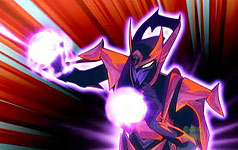 This is an ancient and powerful fighting technique requiring a great deal of coordination between the dragon and rider. The rider mags into the air on a continuous mag-energy stream which the rider then channels. The rider uses the channeled energy for a wide variety of mag attacks and defensive moves, while trying to avoid or dodge the attacks of his or her opponent. For attack, the rider can shoot concentrated bursts of mag-energy at their foe, and they can also use their dragon's mag-energy to form a shield to block attacks. Only Dragon Priests and others who have studied the ancient ways can fight with this technique since it involves channeling enormous amounts of mag energy. Humans skilled in mag-claw fighting seem to be able to handle and direct the mag-energy with considerable more finesse and precision than a dragon can by itself. This is perhaps the benefit of the dragon and rider working together. Mag-claw fighting is first seen in "Return of Drakkus, Part 2".
This is an ancient and powerful fighting technique requiring a great deal of coordination between the dragon and rider. The rider mags into the air on a continuous mag-energy stream which the rider then channels. The rider uses the channeled energy for a wide variety of mag attacks and defensive moves, while trying to avoid or dodge the attacks of his or her opponent. For attack, the rider can shoot concentrated bursts of mag-energy at their foe, and they can also use their dragon's mag-energy to form a shield to block attacks. Only Dragon Priests and others who have studied the ancient ways can fight with this technique since it involves channeling enormous amounts of mag energy. Humans skilled in mag-claw fighting seem to be able to handle and direct the mag-energy with considerable more finesse and precision than a dragon can by itself. This is perhaps the benefit of the dragon and rider working together. Mag-claw fighting is first seen in "Return of Drakkus, Part 2".
Mag-fury
A mag-claw fighting technique where the human spins rapidly and sends out an intense shower of individual bolts of mag energy at his or her foe. It's a powerful attack that sends your foe running for cover.
Mag-bounce
A technique where the rider shoots a ball of mag energy that can ricochet off objects in succession, dealing impact damage to each of them. First seen in "The Defiants."
Mag-escape
A rapid escape technique used when a quick retreat is needed to avoid capture or attack from a more powerful foe. It gives the appearance that the rider and dragon are teleporting away, however it may just create a sort of mag-smoke screen to hide the escape.
Mag-rip
A highly advanced mag-draining technique that works the same way a super-powered energy draining whip would work. When this attack is applied to a dragon, it rapidly drains its energy, leaving it weak and helpless. It also appears to cause a great deal of pain.
Mag-shield
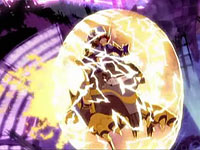 A dome of draconium energy concentrated around the dragon (and its rider) that shields it from most direct attacks. It is believed that a huge amount of draconium energy is needed to create such a shield. So far, we've only seen Beau ("Into the Fire", "Three Times a Hero"), Abandonn and Tyrannis Pax (both in "Return of Drakkus, Part 2") create such shields, which means the average dragon may not be able to do this.
A dome of draconium energy concentrated around the dragon (and its rider) that shields it from most direct attacks. It is believed that a huge amount of draconium energy is needed to create such a shield. So far, we've only seen Beau ("Into the Fire", "Three Times a Hero"), Abandonn and Tyrannis Pax (both in "Return of Drakkus, Part 2") create such shields, which means the average dragon may not be able to do this.
Mag-inversion
The rider directs the dragon's channeled mag-energy towards the ground to reverse gravity to a degree. It can be used to propel the rider and dragon into the air or to cushion a high fall (seen in "Battle for the Ages").
Dragon Classes/Breeds
Dragons have been bred into twelve distinct breeds or classes based on the twelve colors of draconium (in addition to gold, of course). Each of the twelve classes have their own characteristics as listed here. There are FIVE primary gear and draconium colors, and all of the others are off-shoots of these. The five base colors are GOLD, BLACK, RED, GREEN and BLUE. The information in this section comes straight from the creators of the show and is excerpted from the "Definitive Gear and Dragon Guide."
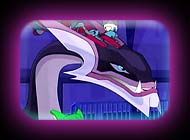 |
Black draconium dragons make good partners for the more cunning rider. Able to make mental connections with their rider, these PSI-CLASS dragons can 'feel' the intentions of those who ride them. They are smart, cunning and also possess a strong mind of their own and unless they respect those who ride them, they can be quite an opinionated handful. Best Gear Matches: Red, Green, Gray, Purple, Orange And Light Blue. |
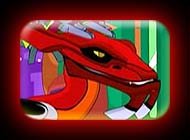 |
Red draconium dragons are creatures of bonding, passion and fire. They are a great compliment to an accomplished rider but can help the less experienced one quickly let things get out of hand. These MAGMA-CLASS dragons are fast, harsh, and ready to attack but also quickly form bonds of loyalty. Best Gear Matches: Green, Light Green, Gray, Light Blue, Turquoise And White. |
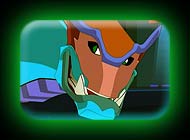 |
Green draconium dragons are a massively powerful lot and they are hard to control and master. They respond best to the brute force or incredible will of a rider. Green BULL-CLASS dragons move slowly and no amount of speed or maneuvering gear short of Red Thruster Gear can substantially help that. They are best at bashing through obstacles or dragging and pushing other competitors around the track. These stubborn creatures don't mesh well with other dragons or gear types but, they don't really need the help either. Best Gear Matches: Black, Red And Brown. |
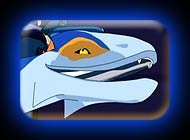 |
Blue ENERGY-CLASS dragons are precise, controlled, lightning fast and acrobatic. They work best with experienced riders who have discipline and skill but because they are so well trained, they make excellent law enforcement dragons and are the perfect partner for younger inexperienced riders who need a dragon to help train and protect them. Best Gear Matches: Purple, Brown, Light Green, Gray And White. |
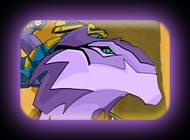 |
Purple PACK-CLASS dragons are smaller and quicker than most dragons. Used to operating in groups, they do not do as well alone and therefore are not generally great single racers. They prefer a communal setting and are used to a relationship that requires that their riders be the alpha-male in a group of both dragons and riders. Great for hunting, they are not independent thinkers and do not really add team value to their rider. However, their gear is another story as its control, trapping and hunting uses make the group as a whole, very dangerous. Best Gear Matches: Black, Red, Green, Light Green, Light Blue, Gray And Turquoise. |
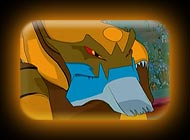 |
The brown EARTH-CLASS dragon was originally bred for digging and demolishing and this dragon can do all of that and more but not without good reason. This old breed is very smart and won’t necessarily do what you want unless he agrees with you. Once on your side, these steady, thoughtful and powerful dragons are very destructive. When crossed, they can go out of control in a judgmental frenzy. Best Gear Matches: Green, Blue And Light Green. |
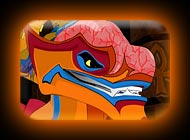 |
Beware the orange CONTROL-CLASS dragon as they are one of the most intelligent and vengeful of al dragons. They do not let humans ride them so much as they enslave humans to help them race and battle. Secretly, the orange dragon is waiting for a chance to start a war with humans but for now they take pleasure in messing in human affairs with their nihilist riders and highly destructive gear. Orange gear is hard to come by, extremely difficult to control and very, very dangerous. Best Gear Matches: Black, Red, Purple, Light Green, Light Blue, Gray And Turquoise. |
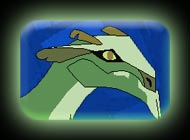 |
These dragons are also known as light green SCAVENGER-CLASS dragons because their smaller size and high speed, high fear disposition makes them excellent gatherers. They can also be easily coerced by force or fear to help any other dragon/human team. Silent, stealthy, quick and resourceful, these dragons make a great team for the Keeper crew and their inventive yet cautious ways. (dragon image from "The Ultimate Scrap Book" and edited by Neemers) Best Gear Matches: Green, Blue, Brown And Gray. |
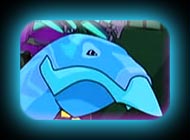 |
The light blue NAUTILUS-CLASS dragon is the hardest dragon type to pin down. They are once fluid and graceful yet hardened and rigid. They are the most versatile of dragons being bread for both land and water but are equally duplicitous of manner as they are use. It requires a mentally alert, flexible and nimble rider to handle the NAUTILUS-CLASS but once you do, you have a fast, dangerous and cunning dragon that is as skilled at attack as it is defense. Best Gear Matches: Black, Red, Purple, Orange, Light Green, Gray, White And Turquoise. |
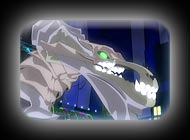 |
The second oldest dragon breed to the gold dragon, the gray draconium dragon is like the raw material dragon. Gray dragons do not race, they do not judge and they do not take sides but the MECHANIST crews that follow them are all about profit. Like the Ferengi in Star Trek, they make their living prospecting this rare draconium which adds power to all others. Best Gear Matches: All Gear Types. |
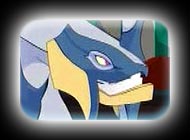 |
The extreme sports dragons of this world, white draconium SKY-CLASS dragons are part flying squirrel, part hang-glider and all about taking risk. Difficult to control when there's extreme action to be had, you better work with this dragon or he'll shake you right off his back. This dragon is all about adventure and fun and in many ways; the SKY-CLASS is the most fun to ride. Just make sure you're up for just about anything because even if you're not, your dragon is. Best Gear Matches: Red, Blue, Orange, Light Blue And Gray. |
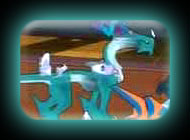 |
Turquoise draconium SONIC-CLASS dragons are loud, forceful and persuasive by manner or force; just like their riders. To partner with one of these dragons requires you to prove yourself worthy to the dragon. One of the most strategic and communicative dragons on the planet, you don't always know what a group of them is up to so you better be able to handle yourself around them or together, they just might decide they don't want you around. Best Gear Matches: Black, Green, Purple And Gray. |
Other Creatures
Dragon City is primarily occupied by humans and dragons and there appears to be few other creatures around. However, we do see a few others on occasion.
Hydrags
|
Newts
|
Crow-drags
|
Muhorta
|
Thank you to Skylii for starting the list of mag abilities.
All Dragon Booster characters and related logos are the property of The Story Hat. Read the full notice here. Please report broken links and errors to the webmaster . Unless otherwise noted, all text appearing on this web site as well as all non-character based design elements are Copyright © 2005-2007 by Curt Schimmel.

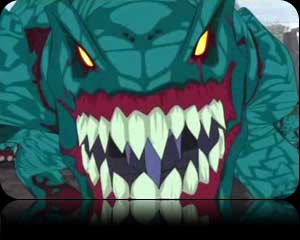 These are probably the closest relative to dragons themselves, though they have no mag abilities. They are large, four-legged creatures with large heads and very large mouths with lots of sharp teeth. Their legs are short, holding their bodies close to the ground like an iguana, apparently so they can easily crawl through narrow caves. They are predators living in the wasteland surrounding Dragon City who prefer to dwell in caves and crevices. They appear to prey on just about anything that happens by their lair, including both dragons and humans. It's not clear if they are as intelligent as dragons or if they're just animals, but they are extremely dangerous and humans make no attempt to ride or domesticate them. Beau was able to make friends with some of them in "No Paynn, No Gain," but otherwise they are to be avoided at all costs.
These are probably the closest relative to dragons themselves, though they have no mag abilities. They are large, four-legged creatures with large heads and very large mouths with lots of sharp teeth. Their legs are short, holding their bodies close to the ground like an iguana, apparently so they can easily crawl through narrow caves. They are predators living in the wasteland surrounding Dragon City who prefer to dwell in caves and crevices. They appear to prey on just about anything that happens by their lair, including both dragons and humans. It's not clear if they are as intelligent as dragons or if they're just animals, but they are extremely dangerous and humans make no attempt to ride or domesticate them. Beau was able to make friends with some of them in "No Paynn, No Gain," but otherwise they are to be avoided at all costs.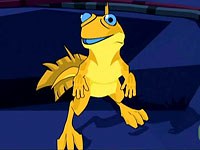 The yellow-bellied newt is a tiny harmless reptile which stands about six inches tall. It appears to be a scavenger and seems to be able to live in Dragon City quite well. Humans don't seem to be concerned about them anymore than we are concerned about squirrels. Newts are first seen in "Faster Than Fear."
The yellow-bellied newt is a tiny harmless reptile which stands about six inches tall. It appears to be a scavenger and seems to be able to live in Dragon City quite well. Humans don't seem to be concerned about them anymore than we are concerned about squirrels. Newts are first seen in "Faster Than Fear." 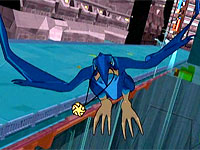 A crow-drag is a flying reptile (or perhaps a featherless bird). They nest in high places in the city and appear to be harmless, though they will defend their nests from intruders. First seen in "Darkness Falls."
A crow-drag is a flying reptile (or perhaps a featherless bird). They nest in high places in the city and appear to be harmless, though they will defend their nests from intruders. First seen in "Darkness Falls." 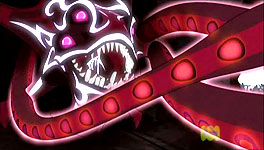 The muhorta is a vampire dragon that drains and feeds off the draconium energy in dragons. It is very large and is quite dangerous. Once a dragon is caught in its tentacles, it has no hope of breaking free until its energy is completely drained. Like vampire bats, it seems the muhorta will let the dragon go once it has drained its energy in the hope that it can feed off it again in the future. How many muhorta occupy the wasteland is unclear. The Muhorta is first seen in "All is Not Lost."
The muhorta is a vampire dragon that drains and feeds off the draconium energy in dragons. It is very large and is quite dangerous. Once a dragon is caught in its tentacles, it has no hope of breaking free until its energy is completely drained. Like vampire bats, it seems the muhorta will let the dragon go once it has drained its energy in the hope that it can feed off it again in the future. How many muhorta occupy the wasteland is unclear. The Muhorta is first seen in "All is Not Lost."